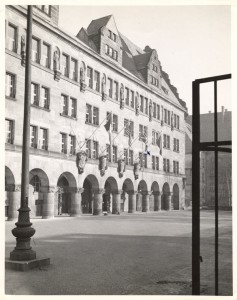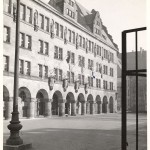Threaded through the renewed hope for the future demonstrated by the recovery of France and preparations for the upcoming trials in Germany, Dodd reflected on October 2 that “I sometimes feel depressed about the future. Many well-informed people over here say another war is inevitable–already we are laying the foundation for it.” [p. 154, 10/2/1945]. Observations of the actions and attitudes of his colleagues on the other prosecution teams did not bode well but Dodd resolved “to stand openly and firmly against this menace.” [p. 155, 10/2/1945]
Meetings, desk work, interrogations, staff changes, lunches, dinners and the occasional evening entertainment filled the time as the days passed and became “ordinary.” Continue reading







